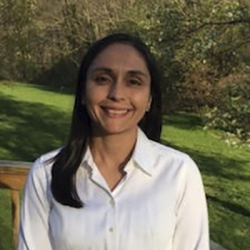Elizabeth (Lisa) Methratta, PhD
Lisa is a marine ecologist with a background in fisheries and benthic ecology. In her nearly 20-year career, Lisa has worked on such topics as spatially explicit fish-habitat relationships on the Northeast U.S. Continental Shelf, oyster reef restoration and blue crab fishery dynamics in Chesapeake Bay, and more recently offshore wind effects on finfish populations. Over the course of her career, Lisa’s work has involved designing approaches to synthesizing large volumes of complex fisheries data, providing advice on survey design methodology, coordinating projects involving multiple agencies, and leading working groups to discuss the best science available to underpin the environmental decision making process. Lisa’s work at the nexus of offshore wind and fisheries has included a critical analysis of survey design methodologies used to study finfish impacts and the publication of a meta-analysis of European finfish studies conducted at wind farms. Most recently, Lisa worked as the aquaculture liaison for the NOAA Fisheries Office of Protected Resources (OPR) in Silver Spring, MD where she helped OPR and the Protected Resources Divisions in the Regional Offices advance their understanding of offshore aquaculture and its potential effects on protected species. Lisa holds a B.S. in Biology from Penn State University and a Ph.D. in Biology from the University of Pennsylvania. Following graduate school, she went on to pursue a National Research Council Postdoctoral Fellowship at NOAA Fisheries in Woods Hole, MA where she used quantitative tools to explore ecosystem-scale fish-habitat relationships and develop indicators of ecosystem status.
